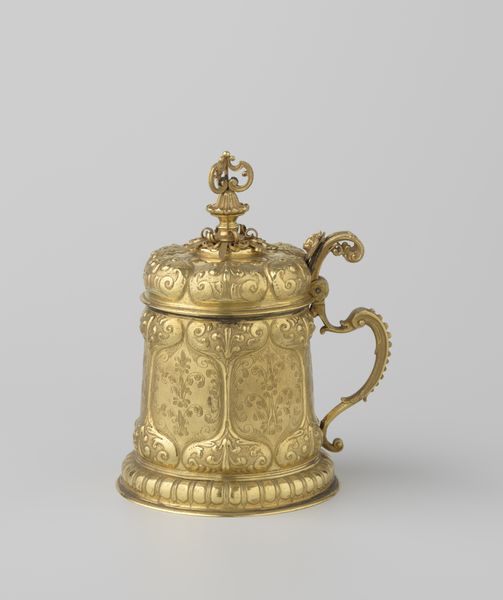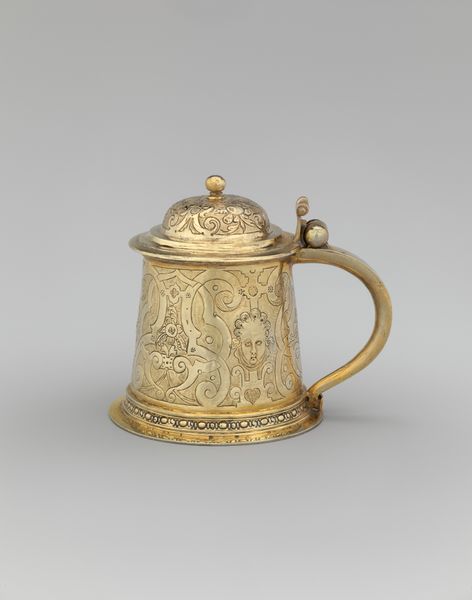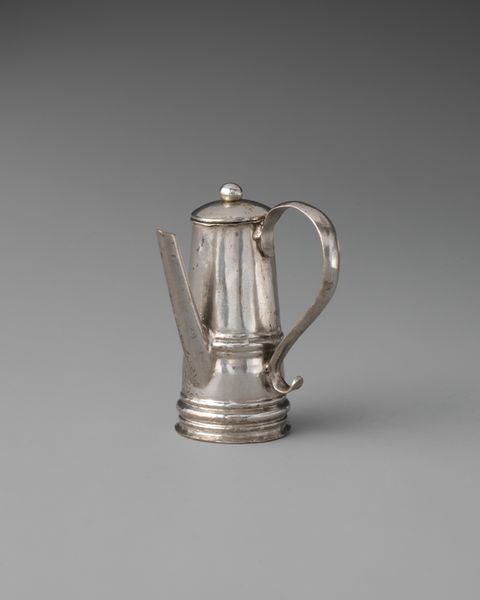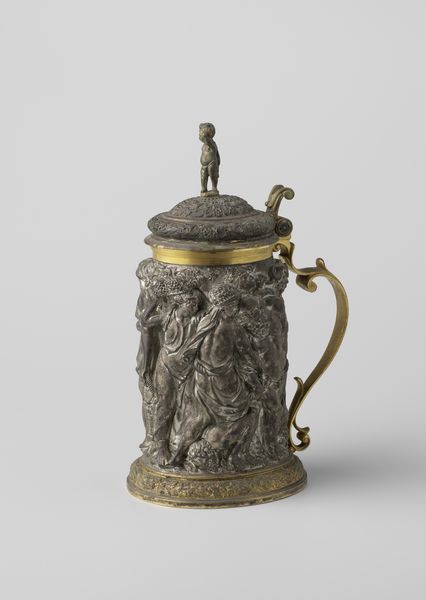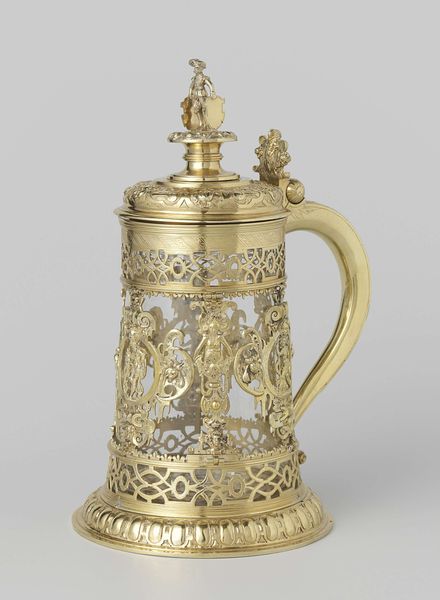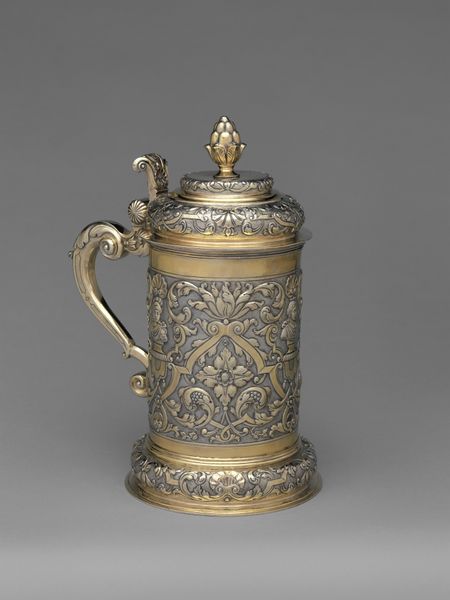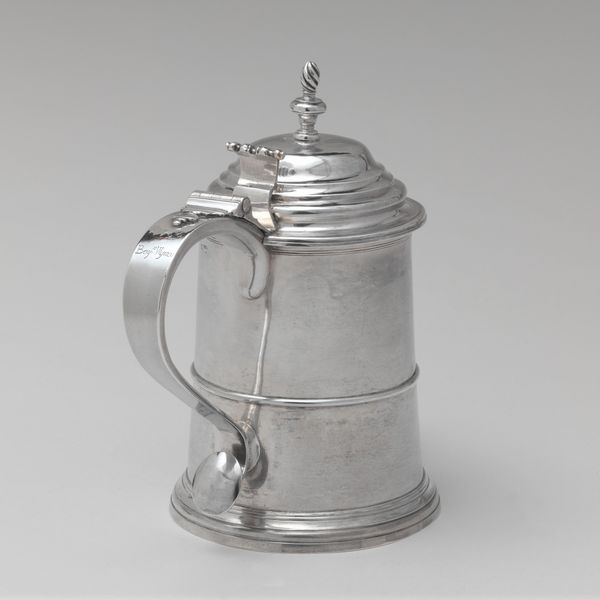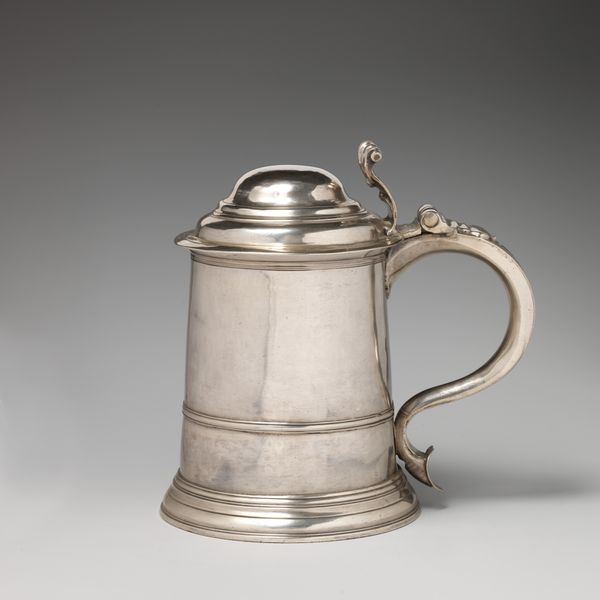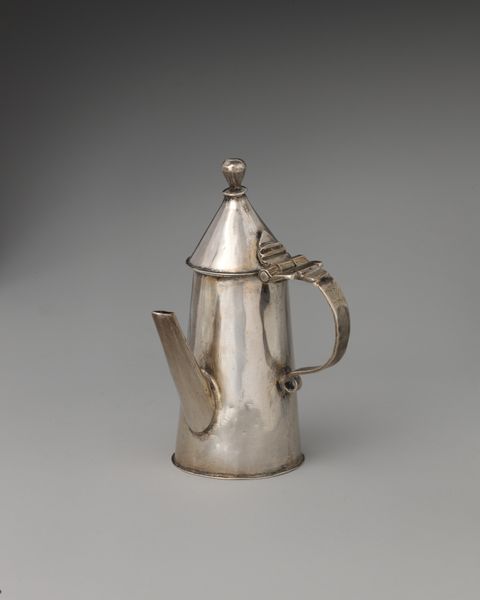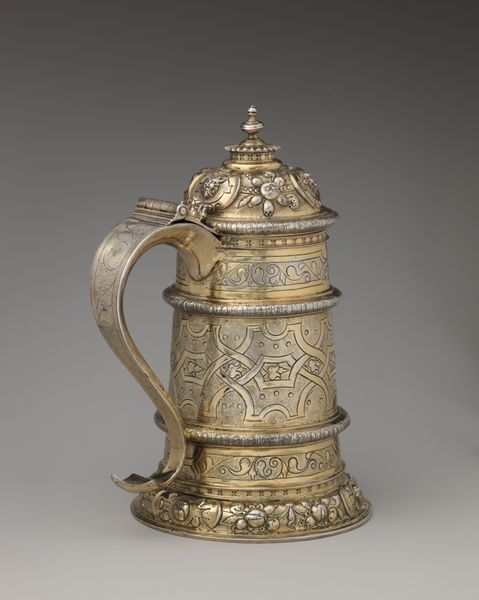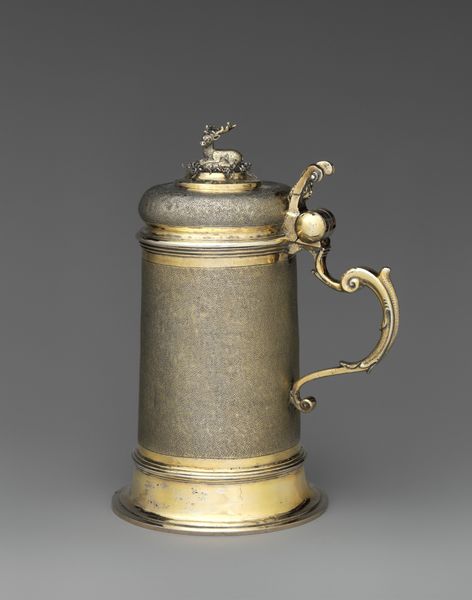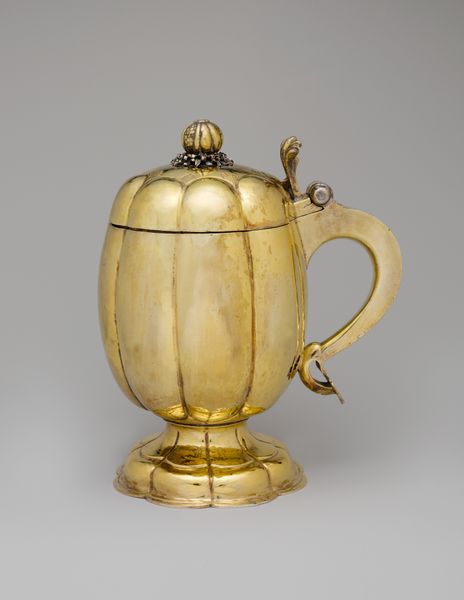
Galvanoplastische reproductie van een drinkkan gedecoreerd met bloemen, vruchten en bandwerk before 1880
0:00
0:00
Dimensions: height 23.5 cm, diameter 13.0 cm, width 17.0 cm, weight 990 gr
Copyright: Rijks Museum: Open Domain
This drinking vessel was made by Elkington & Co. using a process called galvanoplasty, which involves electrodeposition to create a metal coating on a mold. The can is a copper alloy, decorated with flowers, fruits, and bandwork; its golden color emulates more expensive materials, like gold. Galvanoplasty was developed in the 19th century, as a way to precisely copy objects or create multiples of them. It democratized access to luxury items, like this elaborate drinking vessel, by making them more affordable. The use of this technique highlights the shifting relationship between design, production, and consumption during the Industrial Revolution, when many historical styles, and techniques like chasing and engraving, were revived using new technologies. While it might be tempting to dismiss this kind of object as mere reproduction, it reflects a deep engagement with material history, and a desire to make beauty available to a broader audience. This artwork demonstrates how new modes of production can blur the lines between art, craft, and industry.
Comments
No comments
Be the first to comment and join the conversation on the ultimate creative platform.
